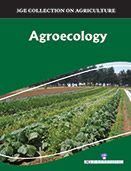Agriculture and Life Sciences

‘Agroecology’ is also now getting accumulative attention as an approach to agriculture that endeavors to resolve environmental, sustainability and production goals by focusing the application of ecological concepts and principles to the design and management of agricultural systems. Agroecology can be seen as part of a broader approach to sustainable intensification focusing on ecological and knowledge. Maintenance of biological diversity and nutrient cycling mechanisms are global principles that are communal to all agroecosystems and therefore vital in the design of sustainable agricultural systems. Regional or site-specific factors contain climate, soils and socio-economic preferences and conditions. These regional factors differ greatly among agroecosystems and may assume major importance in some. Research and development on global commonalities has potentially the most universal impact across agroecosystems.
This edition entitled “Agroecology” discusses important principles that regulate agroecological systems, including crop production, soil management, and environment preservation. A wide range of agricultural practices and system components are identified in the literature as being agroecological in nature. The book aims at the holistic study of agroecosystems which are seen as complex systems in which ecological processes occur, e.g. nutrient cycling, predator/prey interactions, symbiosis and successional changes. There are many manifestations of alternative agriculture: biodynamic agriculture, organic farming, permaculture, natural farming and others. All these methods promote a diverse range of alternative practices designed to reduce dependence on synthetic chemical pesticides, fertilizers, and antibiotics, and cut production costs, which in turn diminish adverse environmental consequences of modern agricultural production. One of these systems is organic agriculture which is practiced in almost all countries of the world, and its share of agricultural land and farms is growing, reaching a certified area of more than 30 million hectares globally. Recognizing the potential for synergies, there have been many attempts to integrate agroecological practices and restrictions on the use of certain practices/technologies into defined agroecological approaches, ranging from integrated pest, crop and farm management through conservation agriculture, organic farming, biodynamic agriculture, eco-farming, regenerative agriculture to agroforestry, permaculture and many similar variants. This book serves as valuable guide to students and researchers covering an interdisciplinary approach to the relevant aspects of agricultural production related to the interactions between natural processes, human activities and the environment.